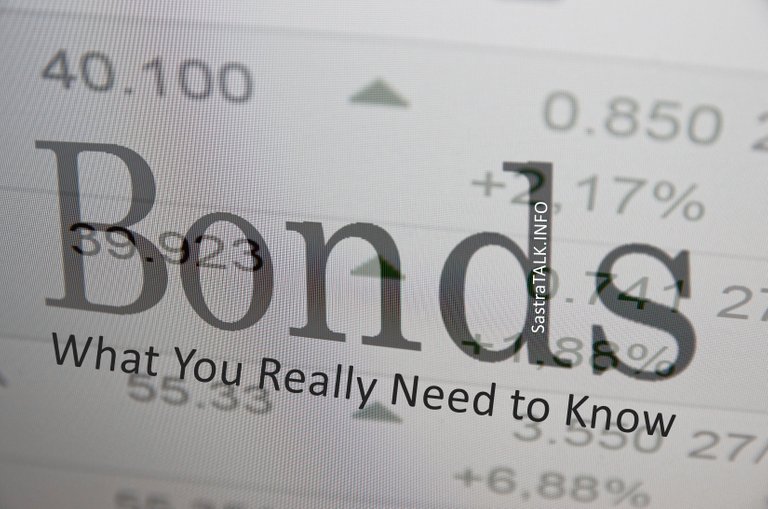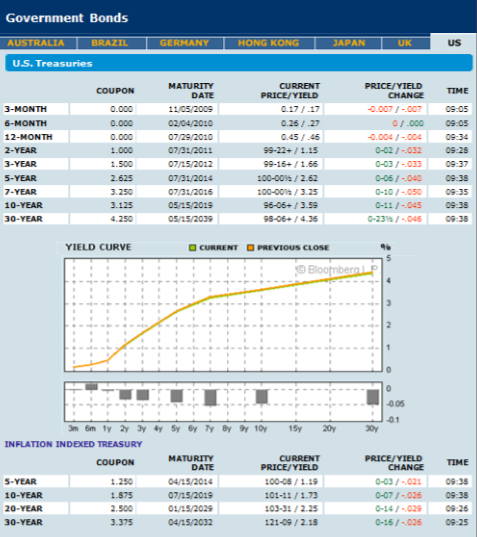Unlike stocks, which are equity instruments, bonds are debt instruments. in effect, you’re loaning the bond issuer money, which they repay with interest.

When bonds are first issued, the investor/lender typically gives the company $1,000, upon which the company promises to pay a certain interest rate every year, called the coupon rate, and then repay the $1,000 loan when the bond matures, at the maturity date. for example, general electric (ge) could issue a 30-year bond with a 5% coupon. The investor/lender gives ge $1,000; every year the lender receives $50 from ge, and at the end of 30 years the investor/lender gets their $1,000 back.
Bonds differ from stocks in that they have a stated earnings rate and will provide a regular cash flow, in the form of the coupon payments to the bondholders. This cash flow contributes to the value and price of the bond, and affects the true yield (or earnings rate) bondholders receive; there are no such promises associated with common stock ownership.
After a bond has been issued directly by the company, the bond then trades on the exchanges. as supply and demand forces take effect, the price of the bond changes from its initial $1,000 face value. on the date the ge bond was issued, a 5% return was acceptable given the risk of ge, but if interest rates go up and that 5% return becomes unacceptable, the price of the ge bond will drop below $1,000, so that the effective yield will be higher than the 5% coupon rate.
Conversely, if interest rates in general go down, then that 5% ge coupon rate starts looking attractive, and investors will bid the price of the bond back up above $1,000. When a bond trades above its face value, it is said to be trading at a premium; when a bond trades below its face value it is said to be trading at a discount. if you ever trade bonds, understanding the difference between your coupon payments and the true yield is critical.
There are three common types of bonds available for general sale, each of which offer different levels of security and projected earnings:
TREASURIES: u.s. treasury bonds carry the full faith and credit of the u.s. federal government, eliminating much of the risk associated with investments. as you can imagine, in return for this minimized risk, your earnings rate will be less than more “exotic” investment choices.
Treasuries, particularly the 3-month treasury bill, are sometimes quoted as the “risk-free rate of return,” the minimum rate of return an informed investor will accept for enjoying the minimum risk. in the real world there is no true risk-free investment, although treasuries do come close. below is a snapshot of the government Bond page from Bloomberg.com:

You should also understand the meaning of a yield curve, as displayed on the bloomberg.com screenshot opposite. a yield curve is the relationship between the interest rate offered and the time to maturity of an investment. While all investments have a yield curve, many traders and economists closely follow the yield curve of treasuries of different maturities to help make other financial decisions and projections.
CORPORATE BONDS: These bonds can be quite secure or sometimes risky; their inherent value is greatly determined by the creditworthiness of the corporation offering them, and corporate stability can change over time. for example, until 2009, most bonds offered by u.s. automakers implied good levels of security. The bankruptcies of gm and chrysler, combined with serious financial problems at ford Motor company, generated much higher risk factors for their corporate bonds. typically, however, corporate bonds are more secure than corporate stocks.
MUNICIPAL BONDS: states, cities, or other local governments often issue bonds to raise money to fund services or infrastructure projects (road and bridge repair, sewers, purchasing open land, etc.). The primary advantages to investors are security and tax benefits; most municipal bonds offer interest earnings that are exempt from federal taxes. in addition, if you are a resident of the state in which you own one or more municipal bonds issued by local governments, your earnings may also be exempt from state or local taxes. never assume a high security factor, however — some local governments may be in dire financial condition and your risk factor may outweigh any tax benefits you enjoy.
TIP!
Bonds are not nearly as liquid as stocks and ETFs, and therefore there is not nearly as much information about them publicly and freely available. If you are going to buy bonds, always buy them from a reputable source and always check to make sure you are getting a fair price.
[Investing 101 - Wall Street Survivor # Page 13 - 15]
https://www.sastratalk.info/2020/01/what-is-bonds-what-you-really-need-to.html
Congratulations @sastra! You have completed the following achievement on the Steem blockchain and have been rewarded with new badge(s) :
You can view your badges on your Steem Board and compare to others on the Steem Ranking
If you no longer want to receive notifications, reply to this comment with the word
STOPVote for @Steemitboard as a witness to get one more award and increased upvotes!